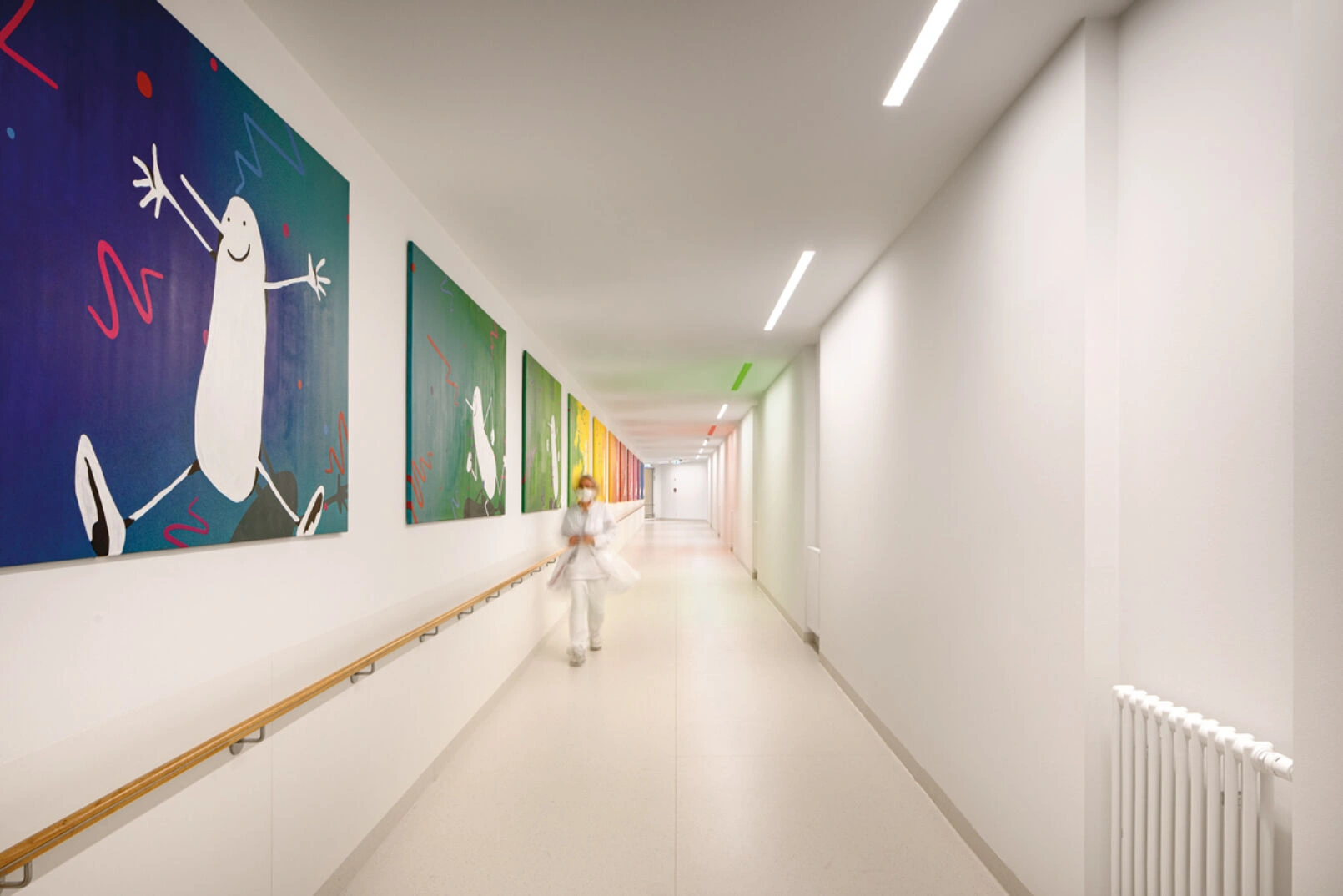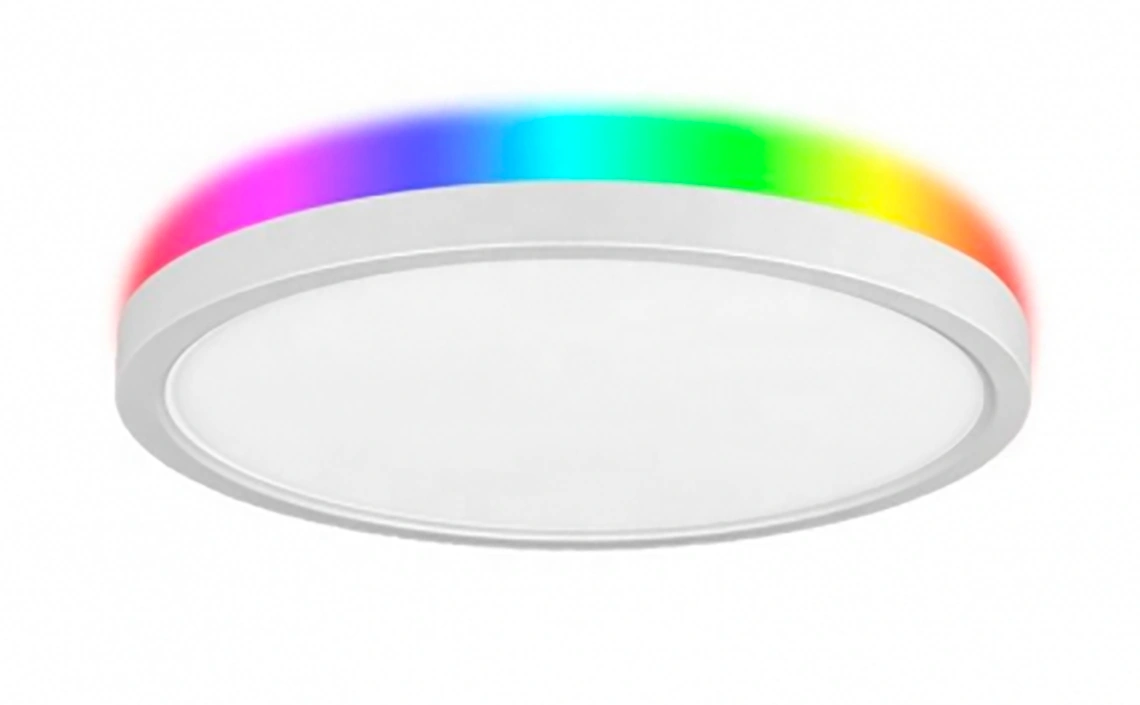So-called "classic" portholes
The described technology focuses on LED portholes, offering several models tailored for ergonomics. These portholes feature LED arrays with 2 to 4 different colors. For energy efficiency, only 2 LEDs per color are used. Acrylic glass is used as a waveguide, making the light visible at 180°. Typically, white light serves as daytime lighting, turning on based on sunset, sometimes replacing conventional lighting.
The installation of these portholes is simple, requiring a 24 to 48Vdc power supply, and they communicate via WiFi or Bluetooth. The HealthCall software, integrated into this technology, offers various scenarios that can be customized by nursing homes or clinics.
For example, different colors and flashing modes indicate different alerts or statuses:
- Blue or yellow: different types of room calls.
- Green: staff presence or nurse attendance.
- Red: various alerts, including assistance requests or exceeded time limits.
- Flashing red and blue: fire alarm.
- White: used as night lighting.
It is emphasized that the responsiveness of these systems could save lives, as every second counts in an emergency.
The equipment works in conjunction with HealthCall, which responds to events such as:
- Resident calls.
- Requests for assistance or reinforcements.
- Various detections (falls, cries, movements).
- Geolocation (anti-escape).
- Technical alarms.
Finally, for integration and user-friendliness, several models of these portholes are available, with some even offering the possibility of incorporating a photo or number.
So-called "architectural" portholes
The most elegant architectural solution.
A uniform LED strip of customizable length above the door can display one or more colors at the same time, conveying all desired and imaginable statuses.
Not only is this technology visually stunning, but there is an enormous variety of installation options: recessed or surface-mounted, single or double strips, with different widths and finishes...
Want more?
No problem, long LED strips covering entire hallways can use individual color addressing at each door, while also providing white lighting for your corridors.
In case of an alert or evacuation, these LED strips can guide the way with directional blinking.
Display
Displays have also been neglected for a while.
However, technology is bringing them back to life, with new functionalities becoming available.
For us, it’s no longer just a porthole, but a dedicated display similar to a computer screen.
Available in different sizes, these displays can show the photo of the room's occupant, along with their name.
In case of a call, the display fills with the desired color depending on the event or an alarm status.
Additional customizable information can include:
- The name of the caregiver present in the room during care or intervention.
- Contagion importance or specific dietary needs (e.g., salt-free).
- Fasting required due to a scheduled operation.
- Confirmation that the room is part of the round.
- Visits are prohibited.
- The presence or absence of the resident or patient in the room.
Each message can be paired with a beep, buzzer, or ringtone.
Lamp & Spotlight
The simplest, most cost-effective, and quickest solution to implement.
Even future installation has no impact on the initial setup.
Whether in hallways or rooms, it can convey status information regarding calls, rooms, or medical interventions.
There’s little to say about this solution except that its flexibility allows for any future upgrades without extra cost.
It's often helpful to communicate the status of a call to the person in the room, but nothing is set up for that. Simple: just replace one of these lamps or spotlights, and it's done.
If there’s no replaceable lamp or spotlight, no problem—we offer a 230 Vac socket connected wirelessly.




